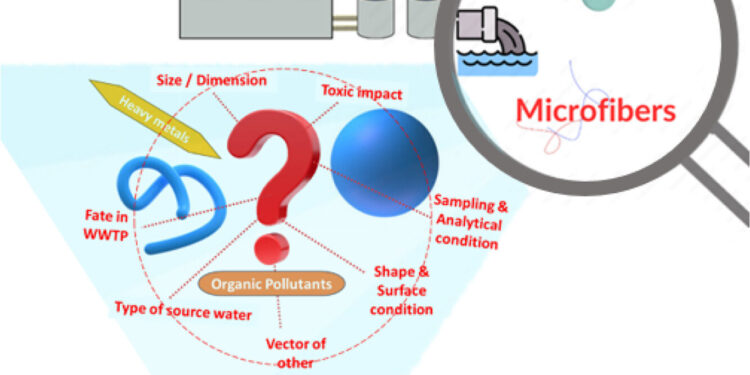Graphic summary. Credit: Total environmental science (2025). DOI: 10.1016 / J. SCITOTENV.2025.178818
Despite the progress of wastewater treatment, tiny plastic particles called microplastics still slide, posing potential health and environmental risks, according to new research from the University of Texas in Arlington.
Because plastic is inexpensive to produce but light and robust, manufacturers have found it ideal for use in almost all good consumers, packaging food and drinks to clothing and beauty products. The drawback is that when a plastic element reaches the end of its useful lifespan, it never really disappears. Instead, it breaks down into increasingly small parts called microplastics – particles of five millimeters or less, on the width of a pencil gum – which is found in our soil and our water.
“What our systematic review of the literature has revealed that, although most wastewater treatment facilities considerably reduce microplastic charges, the complete removal remains inaccessible to current technologies,” said Un-Jung Kim, assistant professor of Earth and environmental sciences at UT Arlington and the main author of the study published in Total environmental science.
“Consequently, many microplastics are reintroduced into the environment, probably transporting other harmful residual pollutants in wastewater, such as bisphenol, PFAS and antibiotic chemicals,” added Dr. Kim. “These microplastics and organic pollutants would exist in trace levels, but we can obtain exposure through simple actions such as drinking water, laundry or water plants, leading to potential long -term human health impacts such as cardiovascular disease and cancer.”
According to the study, one of the main challenges of microplastics detection and attenuation is the lack of standardized test methods. Researchers also call a unified approach to define the size of the particles qualified as microplastic.
“We have found that the effectiveness of treatments varies according to technological communities and the way microplastics are measured to calculate elimination rates,” said the main study of the study, Jenny Kim Nguyen. “One way to better solve the growing problem of microplastics is to develop standardized test methods that provide a clearer understanding of the problem.”
Nguyen started this research as a first cycle student in the Kim environmental chemistry laboratory. She now pursues a master’s degree in Earth and Environmental Sciences at UTA, where she works to develop standardized experimental protocols to study microplastics in air and water.
“This work helps us to understand the problem of current microplastics, we can therefore resolve its long-term health impacts and establish better attenuation efforts,” said Karthikraj Rajendiran, study co-author and assistant research professor of the UTA muscle research center within the college of nursing and health innovations.
The team also highlights the need for greater public awareness of microplastics to help consumers make more environmentally friendly choices.
“While communities must take measures to improve microplastic detection and screening for wastewater monitoring and water quality, consumers can already make a difference by choosing to buy clothes and textiles with less plastics whenever possible, knowing that microfibers are the most common microplastics permanently by wastewater,” added Kim.
More information:
Jenny Kim Nguyen et al, a review on microplastic fibers and pearls in wastewater: current knowledge on their occurrence, analysis, treatment and ideas on the impact of human exposure, Total environmental science (2025). DOI: 10.1016 / J. SCITOTENV.2025.178818
Supplied by the University of Texas in Arlington
Quote: Microplastics still slip into wastewater treatment factories, transporting pollutants and threatening long -term health (2025, April 21) recovered on April 21, 2025 from
This document is subject to copyright. In addition to any fair program for private or research purposes, no part can be reproduced without written authorization. The content is provided only for information purposes.



